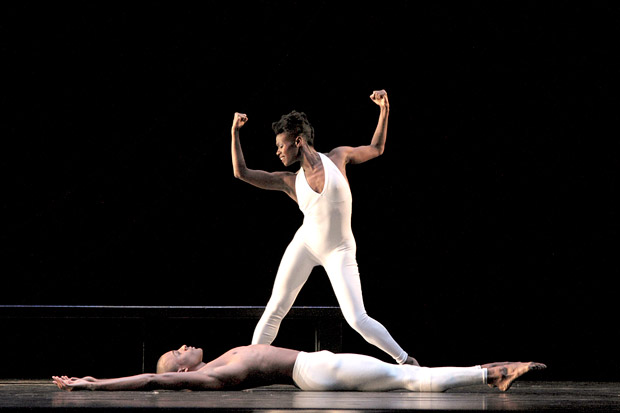
© Steve Wilson. (Click image for larger version)
Alvin Ailey American Dance Theater
Odetta, Uprising, Night Creature, Awassa Astrige/Ostrich, Bad Blood, After the Rain pas de deux, Revelations
Boston, Wang Theatre
26, 27 March 2015
www.alvinailey.org
www.citicenter.org
The comet known as the Alvin Ailey Dance Theater passed through Boston recently and left thousands of happy spectators in its wake. I caught the first two performances (sponsored by Celebrity Series of Boston), and after the first had the same response I’ve had for over 30 years now: why can’t this company give its stellar dancers more interesting choreography — aside that is from Revelations, Ailey’s undisputed masterpiece with which the company has concluded virtually every performance for over half a century now.
The first piece on opening night was Odetta, choreographed last year by Matthew Rushing and set to music by various artists performed by Odetta Holmes. A voice-over intoned inspirational rhetoric (“We are powerful beyond measure… You are a child of God…), and that vocal accompaniment, not always audible, ran throughout the piece. The choreography was neither fish nor fowl, never registering an individual personality or character. The fourteen dancers were constantly on the move, dashing on and off stage, whirling their arms like windmills and extending them skyward in inspirational gestures, propelling them in zig-zag movements, displaying lots of uncontrolled, frenetic activity. Despite her valiant efforts, lead dancer Hope Boykin wasn’t able to make the dance cohere. Only in the final piece, Freedom Trilogy, did the choreography show the dancers to advantage. Odd that Rushing would have created a piece that mostly hides the astounding abilities of his dancers.

© Steve Wilson. (Click image for larger version)
Uprising (2006) by the Israeli choreographer Hofesh Shechter set to music by Shechter and Vex’d began with a thunderous crash of noise so loud you’d have thought it was heralding the Apocalypse. I nearly shot out of my seat. This mega-decibel cacophony was then repeated so many times that when it finally stopped I felt like I’d been released from prison. The respite lasted all of two seconds, then back to more crashing percussion. Overhead spots showed seven men running, loping, leaping, and creeping all over the stage, revolutionaries being pursued. A horizontal band of some 40 lights at the back of the stage suggested interrogation, reinforcing the sense of insurgents persecuted by an oppressive regime.

© Paul Kolnik. (Click image for larger version)
Once the theme of Uprising was established, which took all of five seconds, the dancing struck me as repetitious and pretentious. For example, two men arm-wrestled, one lifted the other, put him back on the ground where he fell to the floor, then stood up, and now the men gripped heads and circled each other in a second round of wrestling. They repeated this sequence as they were joined by two other couples doing the same thing. Suddenly all six men froze, and then another crashing chord. It’s anybody’s guess what this was all about. At the end, one man climbed atop the scrum of his fellows holding a small red flag, so apparently the uprising was a success.

© Gert Krautbauer. (Click image for larger version)
The opening night performance concluded, as is usual with the Ailey company, with Revelations. I’ve seen the piece over 30 times by now but it never fails to thrill me. The invention and variety of choreography combined with the powerful religious feeling suffusing the whole make it one of the most memorable theater experiences I’ve ever known. Kirven Douthit-Boyd gave a powerful performance in I Wanna Be Ready, and Jeroboam Bozeman, Sean Aaron Carmon, and Samuel Lee Roberts were spectacular in Sinner Man. But the entire company shone here. How the dancers manage to keep performing Revelations at the top of their bent is beyond me, but to their great credit, they do.

© Gert Krautbauer. (Click image for larger version)
The second night my expectations were happily thwarted for this was by far the best program I’ve ever seen Ailey offer: five pieces, each as good as the others in its different way. First up was a popular Ailey standard, Night Creature, set to music by Duke Ellington, which could easily be re-titled Hips Unlimited. The dancing is freewheeling and joyous, combining jazz, boogie, and ballet. Hope Boykin led the group (six couples) in their high-spirited romps ending in an evocation of the beginning of Revelations in which a cluster of dancers reach skyward with outstretched arms and open palms. The New York Times has aptly described the piece as “delectably sassy.” In Awassa Astrige/Ostrich by Asadata Dafor to music for drum and flute by Ron McBee and Carl Riley, the great Jamar Roberts impersonated an ostrich far better than most ostriches could.

© Paul Kolnik. (Click image for larger version)
Bad Blood by Ulysses Dove to music by Laurie Anderson and Peter Gabriel showed three couples and one man involved in a fast, athletic battle of the sexes, with the women giving as good as they get. Partners hurled and flung themselves at each other, colliding in fierce embraces. The women lept defiantly into the men’s arms with outstretched legs parallel to the floor, and when both women and men whirled with clenched fists, the sense of sexual tension was palpable. No matter how often they performed this movement, it was always mesmerizing.
Fourth up was Christopher Wheeldon’s intricate and tender After the Rain Pas de Deux to ethereal music by Arvo Part for piano and violin. Whereas the couples in Bad Blood were at odds with one another, here was a perfect union of man and woman. Even when they leaned away from each other, they were less in opposition than symbiotic reflections of one another. The piece was also vividly visual, as when the man lifted the woman from behind and she rose with one foot on his thigh, projecting herself forward like the figurehead of a ship. At the end, they subsided slowly to the ground, the man hovering protectively over the woman, not one but two dying swans. And then (and why not?): Revelations!
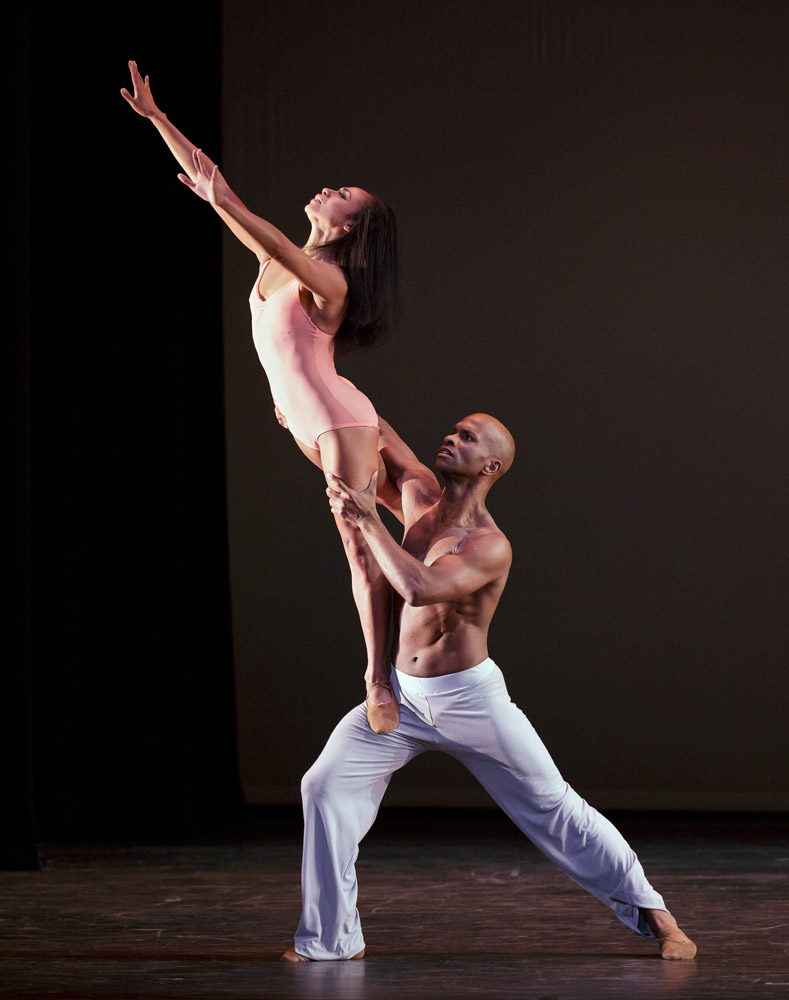
© Paul Kolnik. (Click image for larger version)
With Robert Battle winding up his fourth year as Artistic Director, it’s clear the company is finally heading in a new and exciting direction.








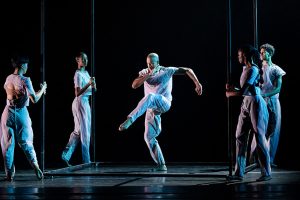
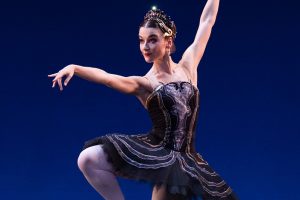
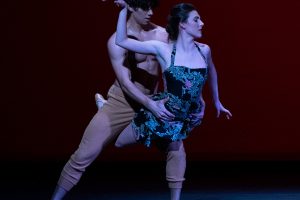
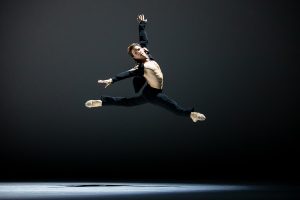



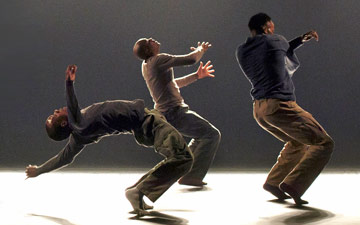

You must be logged in to post a comment.